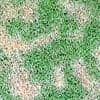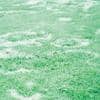Lawn Diseases
Fortunately, lawn diseases causing significant damage are not very common in the Midwest, but a few do exist that we will explain. Your Naturescape specialist will always be watching for a disease problem, but if you possibly see any of the following situations, please call us.DOLLAR SPOT
 Dollar Spot is a fungal disease that may be observed on turfgrasses. It occurs on several grass
species and is so named because it may cause damaged areas in the lawn that are approximately
the size of the silver dollar. It can give a lawn a clumpy, irregular appearance. Individual
leaves exhibit lesions that are white to tan in color with reddish-brown borders.
Dollar Spot is a fungal disease that may be observed on turfgrasses. It occurs on several grass
species and is so named because it may cause damaged areas in the lawn that are approximately
the size of the silver dollar. It can give a lawn a clumpy, irregular appearance. Individual
leaves exhibit lesions that are white to tan in color with reddish-brown borders.
BROWN PATCH
The disease starts as water-soaked lesions on the leaf blade or sheath, quickly fading to tan. The lesions may girdle the blade, causing it to die back from the tip, leaving a pinched tip and a wrinkled looking blade. Severely affected patches of grass appear yellow and sunken, giving the turf a pockmarked look. Shiny black, football-shaped spores are easily seen on affected blades with a dissecting microscope.Severe attacks of Brown Patch are associated with periods of warm-to-hot muggy nights with light showers which occur after a period of drought.
Symptoms of Brown Patch have been confused with other diseases such as dollar spot and fusarium, as well as insect, chemical, dog or other injury.
NECROTIC RING SPOT
In the past few years many homeowners have become all too familiar with the "frogeye" pattern of Necrotic Ring Spot. This disease, which primarily attacks the Merion, Windsor, and Fylking varieties of Kentucky bluegrass, is not easy to identify in its early stages. At first, it will appear as light, bluish-green patches approximately six inches in diameter. Within days the patches will turn to a reddish-brown and then to a light straw color. It is after the disease has already become well established that the well-known "frogeye" pattern appears. This pattern, which is a light tan ring with a tuft of green grass in the middle, may be up to two feet in diameter. Because the disease prefers hot, droughty conditions it is often found first near sidewalks and driveways, and on southern slopes. Compacted soils are also associated with the development of this disease. When Necrotic Ring Spot has invaded your lawn, it is time to break the rule about watering heavily
and infrequently. Under Necrotic Ring Spot conditions, it is better to water the grass daily so
that you are certain it never gets too dry. Watering can, by itself, make a big difference in your
lawn's ability to survive this threat.
When Necrotic Ring Spot has invaded your lawn, it is time to break the rule about watering heavily
and infrequently. Under Necrotic Ring Spot conditions, it is better to water the grass daily so
that you are certain it never gets too dry. Watering can, by itself, make a big difference in your
lawn's ability to survive this threat.
These tips are designed to help inform you about proper cultural practices such as mowing and watering and common basic lawn problems that may arise. If you ever have any concerns about your lawn or our services please call us.
The Naturescene® Guarantee
Your local Naturescene® branch is committed to making you happy with our service and your lawn and landscape. If you are not completely satisfied with the results of our services or you have any questions or concerns, please call your area branch office and we will be happy to take care of them within 72 hours. If necessary, we will gladly perform a free service call.
